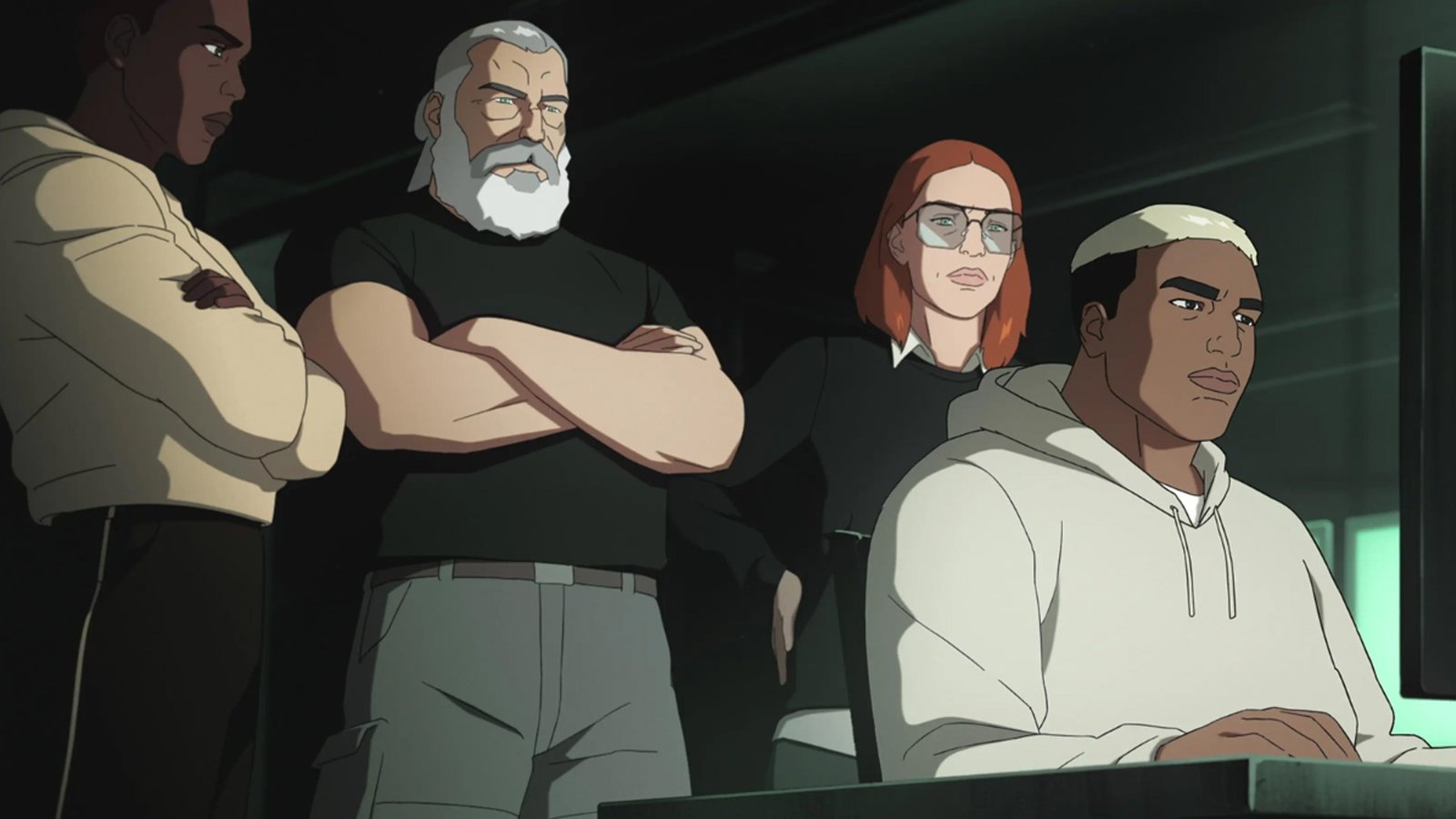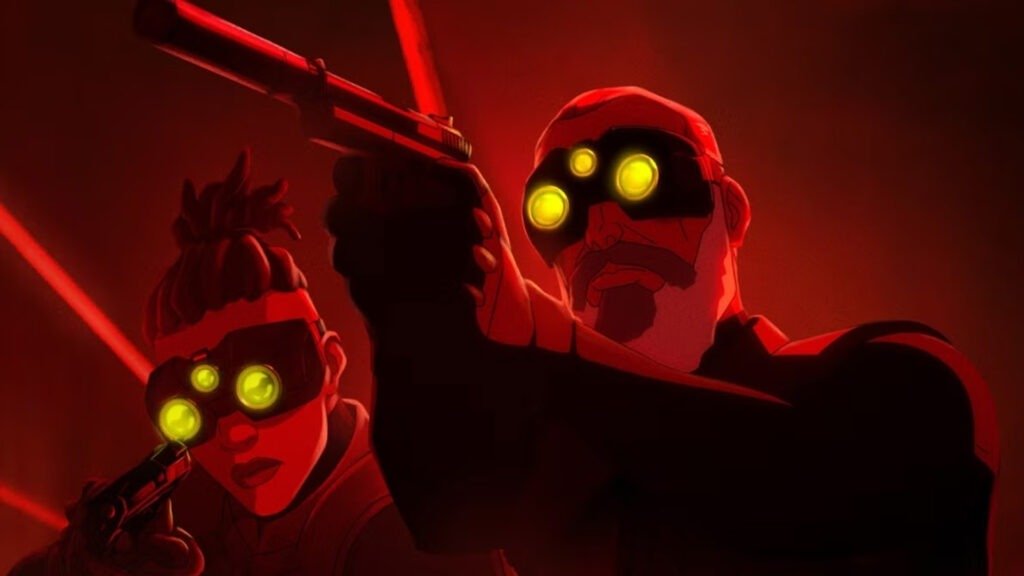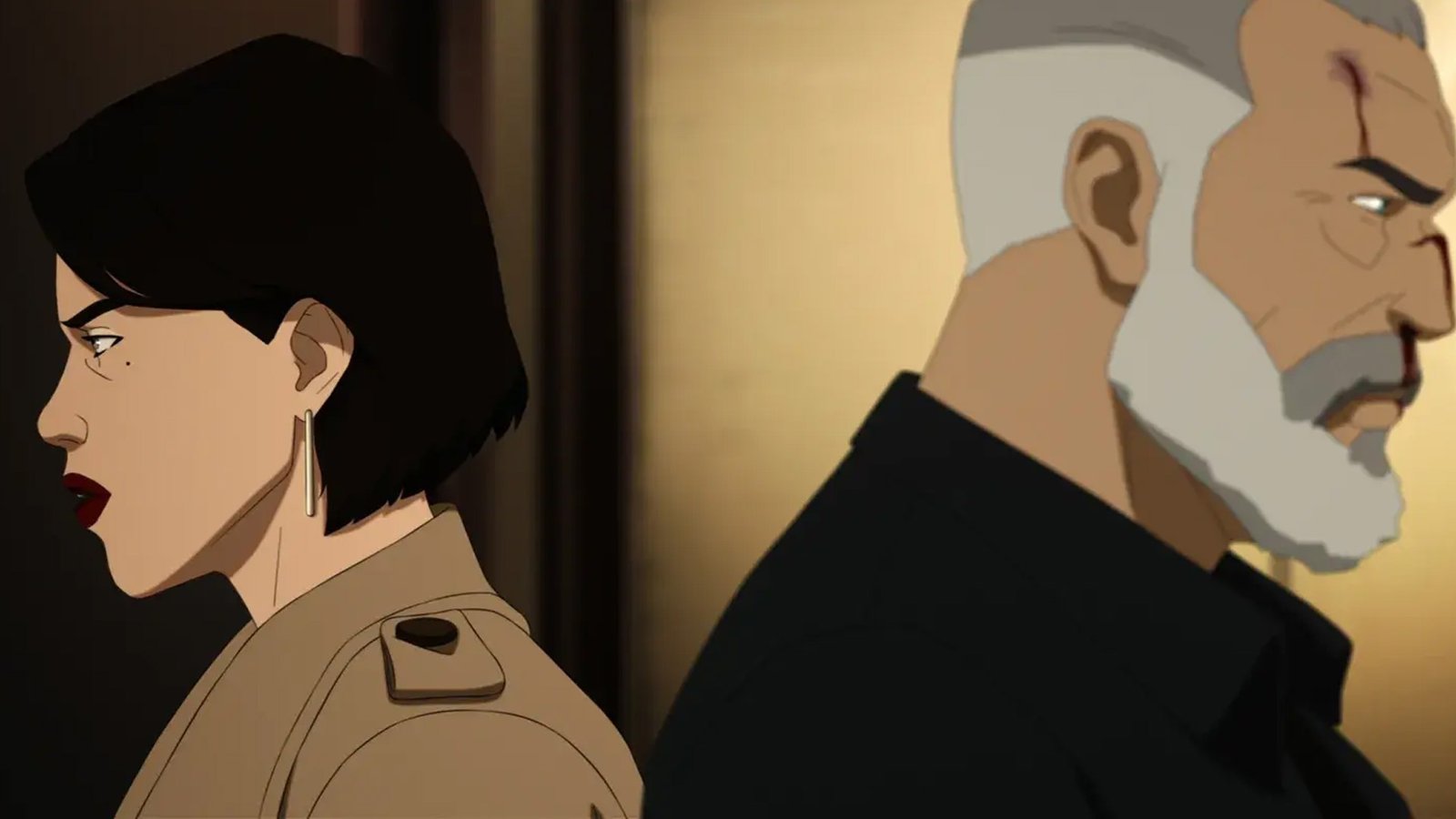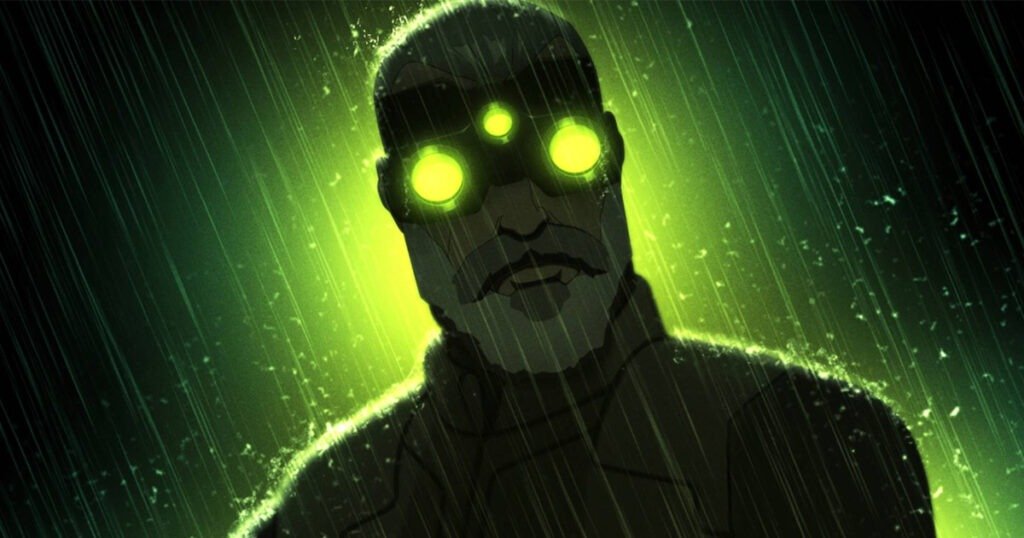Table of Contents
Splinter Cell: Deathwatch on Netflix
Every so often, a series lands that leaves you neither impressed nor disgusted — merely indifferent. Splinter Cell: Deathwatch, Ubisoft and Netflix‘s animated take on the revered stealth franchise, sits squarely in that uneasy middle.
Is it because it’s amazingly good? No.
Is it because it’s mortifyingly bad? No.
Is it because it’s so bad that it’s good? No.
It’s because Splinter Cell: Deathwatch merely exists.
The eight-episode season provides a coherent plot, decent animation, and enough explosions to fill a trailer reel. But when the credits roll, it vanishes from memory almost instantly. For a property that once defined tension and precision, this is an oddly hollow resurrection.
A Paint-by-Numbers Espionage Plot

The premise could have been lifted from any mid-budget spy thriller of the last twenty years. A morally flexible tech CEO dreams of cornering the market on green energy by destroying Europe’s power grid. Naturally, that’s where America’s most elite covert operatives come in.
Sam Fisher, voiced by Liev Schreiber, and his new partner Zinnia McKenna are dispatched to stop her. What follows is a series of missions stitched together by predictable beats: the ambush that turns into a shoot-out, the knife fight that ends in blood, and the inevitable double-cross you saw coming two episodes ago.
There are occasional flashes of energy, like a claustrophobic lift fight early in episode one, that channel Captain America: The Winter Soldier, but the rest of the choreography in Splinter Cell: Deathwatch is curiously flat. It’s workmanlike action: cleanly animated, competently edited, and utterly devoid of personality.
Characters Built on Thin Ice

The show’s biggest misstep lies in how it portrays its supposedly elite professionals. McKenna, despite her résumé, makes tactical blunders that would shame a rookie. At one point, her escape hinges on a loose pipe screw, as though divine intervention were part of standard protocol. These moments aren’t thrilling; they’re credibility-shattering.
Fisher fares better, but not by much. His stoicism borders on emotional inertia, and his hesitations — born of a half-baked backstory tying him to the villain — feel unearned. For a series that has always leaned heavily on moral conflict, Splinter Cell: Deathwatch never gives us a reason to care who wins.
Even the antagonists suffer from emotional inconsistency. Everyone, hero and villain alike, is ruled by impulse rather than intellect, which is ironic for a world supposedly populated by trained spies. The writing mistakes chaos for complexity, leaving the drama feeling forced instead of fateful.
Competent Visuals, Carried by the Voice Cast

Visually, Splinter Cell: Deathwatch settles for competence. Its semi-realistic CG models and muted colour palette echo Netflix’s recent action anime slate of being smooth, serviceable, and essentially indistinguishable. Lighting is crisp, movement is fluid, but directionally it lacks flair; there’s little sense of tension or stealth, qualities that define the games.
The sound design fares better. Gunfire and hand-to-hand combat carry satisfying heft, and the score at least understands suspense, even if it never builds it.
What truly saves the show from mediocrity overload is its voice acting. Schreiber’s gravelly cadence lends Sam gravitas even when the script gives him none, while Kari Wahlgren’s turn as the calculating CEO injects nuance and menace that the writing fails to earn. Her confrontation scene with Fisher, layered with rage, regret, and weary contempt, is the one moment the series feels alive.
Eight Episodes of Cliffhangers and Empty Promises
Each of the first six episodes ends on a cliffhanger designed to mimic tension. Watched weekly, it’s mildly effective; binged back-to-back, it exposes the shallowness of the plot. The repetition turns urgency into routine, where missions blur together, stakes evaporate, and the sense of progression never materialises.

There’s competence here: pacing, editing, and production all meet baseline expectations. But baseline isn’t enough in 2025, not when shows like Arcane and Cyberpunk: Edgerunners have redefined what a video-game adaptation can achieve.
A Spy Story Without Secrets
Splinter Cell: Deathwatch isn’t a disaster, just depressingly safe. It delivers a beginning, middle, and end without ever daring to be memorable. Competent animation, strong voice work, and a serviceable plot prevent total failure. Still, none of these elements capture the cunning, precision, or paranoia that made Splinter Cell matter in the first place.
Fans desperate for any new Sam Fisher content might find it a tolerable curiosity, but everyone else will forget it the moment the algorithm auto-plays something else.
Splinter Cell: Deathwatch is available now on Netflix.
SavePoint Score
Summary
Splinter Cell: Deathwatch is the definition of fine. With competent visuals and excellent voice acting, it’s technically solid but narratively hollow, offering little more than a functional retelling of a spy story you’ve already seen a dozen times before.

